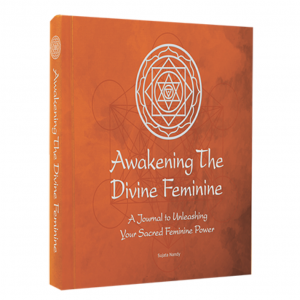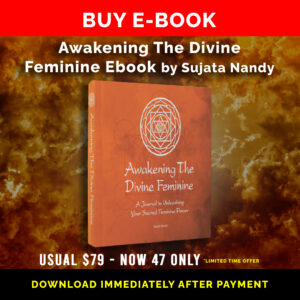Since Vedic time, Raksha Bandhan was a significant ritual which was performed to ward off fear of ghosts, bad spirits and Pishach (vampires). All sorts of diseases and bad omens could be avoided by performing the ritual of Raksha Bandhan.
The Raksha Bandhan Puja Vidhi (prayer ritual), has been described in Vratraj (the Holy Text of Fasts and Rituals), which states that Raksha Bandhan is a ritual of tying the sacred thread, which protects the person from all sorts of evils. Raksha, in the form of sacred thread, is personified as the divine power who makes the worshipper fearless. It is believed that it was Shachi, the wife of God Indra, who created Raksha to protect her husband from demons in the war. Since then, Raksha is worshipped for victory, comfort, sons, grandsons, wealth and health.
Today, Raksha Bandhan is celebrated throughout India and Nepal. It is also celebrated by Jains and are observed by Sikhs as Rakhardi. On this day, sisters tie a band, amulet or talisman called a ‘rakhi,’ around the wrists of their brothers, symbolizing a sister’s need of her brother’s protection and his duty to defend her. It celebrates the bond between siblings, or brother and sister, specifically.
Within some yoga traditions such as Siddha yoga, Raksha Bandhan is practiced as a symbol of universal brotherly love, devotion and protection of fellow humans. Historically, rakhis were even offered by Indian rulers to rulers of other kingdoms to request protection – these rakhi became a symbol of their word of honour and the brotherhood to ensue from the exchange.
Usually celebrated on the Full Moon in the month of August, in Sanskrit, Raksha Bandhan literally means the ‘tie of protection.’ Raksha means “protection,” and bandhan means “to tie.” This year, Purnima (full moon day), tithi will begin at 9:28 pm on August 2, 2020 and will end at 9:28 pm on August 3, 2020. Rakshi tying usually takes place in the afternoon with a lavish spread of food and favourite items of both brother and sister. This year, the most auspicious time to tie the rakhi would be between 1.48 pm and 4.29 am.
HISTORY OF THE RAKHI
The Rakhi festival dates back some 6000 years ago during Aryans’ first civilization. Due to the diversity in many languages, ethnicities and cultures, the traditional customs and rituals to celebrating Rakhi festival differs from region to region throughout India.
It also believed in common folklore that the beginnings of Raksha Bandhan had its deep entrenched presence in the stories that were passed down from generation to generation.
THE STORY OF LORD KRISHNA AND DRAUPADI
For the protection of the Dharma (cosmic law and order), on earth, Lord Krishna killed the devil King Shishupal which had left Krishna hurt with a bleeding finger. On seeing this, Draupadi (the Heroine in the Hindu epic, Mahabharata and the common wife of the 5 Pandavas), had torn a strip of her saree and tied it around Krishna’s injured finger to stop the bleeding. This gesture of Draupadi made Krishna feel bounded by her sisterly love and compassion and He pledged to repay the debt of gratitude in her future. After many years, the Pandavas lost their wife Draupadi in the game of dice to the crooked Kauravas (the cousins of the Pandavas). In excitement, the Kauravas attempted to remove Draupadi’s saree to dishonour her – leaving her 5 husbands helpless in the face of shame. Draupadi called out to Krishna who immediately enveloped her with a thousand layers of cloth that clad her honour and no matter how much the Kauravas tried to disrobe her, her saree seemed endless, twirling and twirling till the Kauravas gave up and Draupadi’s honour remained untouched.
THE STORY OF RANI KARNAWATI AND EMPEROR HUMAYUN
The story of Rajputana Rani Karnawati and Mughal Emperor Humayun is the most popular evidence of the history Raksha Bandhan. In the medieval era, Rajputs were fighting and protecting their Kingdom from Muslim invasions. Since those times, Raksha Bandhan meant the commitment and protection of one’s sister was paramount. Rani Karnawati was the widowed queen of the king of Chittor, who realised that she was not able to protect her Kingdom from the invasion of the Sultan of Gujarat, Bahadur Shah. She sent a Rakhi thread to Mughal Emperor Humayun who was overwhelmed by the gesture and made tracks towards Chittor with his troops without wasting time. He defended the Queen and brought victory to her kingdom.
*Rajput (from Sanskrit raja-putra, which means, “son of a king,”). They are especially numerous in the historic region of Rajputana (“Land of the Rajputs,”) that includes portions of present-day eastern Pakistan.
THE STORY OF ALEXANDER THE GREAT AND KING PURU
In this story, the oldest reference to the history of the Rakhi festival goes back to 300 B.C. during the time when India was invaded by Alexander. It is believed that the great conqueror, King Alexander of Macedonia was wavered by experiencing the fury of the Indian King Puru in his first attempt of defence. On seeing her’s husband plight, Alexander’s wife, who was aware of the Rakhi festival, approached King Puru with a rakhi. King Puru accepted her Rakhi and ceased war against Alexander.
The Nobel laureate Rabindranath Tagore started a mass Raksha Bandhan festival during the Partition of Bengal (1905), where he encouraged Hindu and Muslim women to tie rakhi on men from either sides of the other community and make them their brothers – this was a measure to counter British efforts to create a divide between Hindus and Muslims.
ITEMS FOR THE CEREMONY: Rakhi threads; Vermillion powder; Rice; Ghee lamp; Incense sticks; and Sweets as offerings.
*The Rakhi threads can be made at home with gold and red thread bound together with beads or rudraksha if you like.
THE RITUAL: The rakhi is tied on the right hand of the brother after placing a tilak (a mark worn on the forehead), on the brother’s forehead. A mantra is chanted with a short prayer to protect the brother and sweets are offered to the brother as a gesture of closure of the ritual.
THE MANTRA: Yen Baddoh Bali Raja Danavendro Mahabalah
Ten Tvaamabhibadhnaami Rakshe Maachal Maachal
MEANING: “I tie you with the same Raksha thread which tied the most powerful, the king of courage, the king of demons, Bali. O Raksha (Raksha Sutra), please don’t move and keep fixed throughout the year.”
It is an ancient belief, that whoever worships Raksha on Purnima would be happy throughout the year. In North India, sisters tie the thread on the wrists of their brothers and pray for their protection. In modern context brothers are playing the role of the divine power Raksha who protects her worshippers.
May the Sharavan Purnima provide you the Raksha (protection), you need in a time of most need – we amidst uncertain times such as this. May the Bandhan (bind, tie), surround you in the circle of protection and provide you all the clarity and foresight you require to stay above your game and to stay ahead of all your enemies.
HAPPY RAKSHA BANDHAN TO YOU! JAI MAA!
SUJATA NANDY WORLD GURUKUL
www.sujatanandy.com







